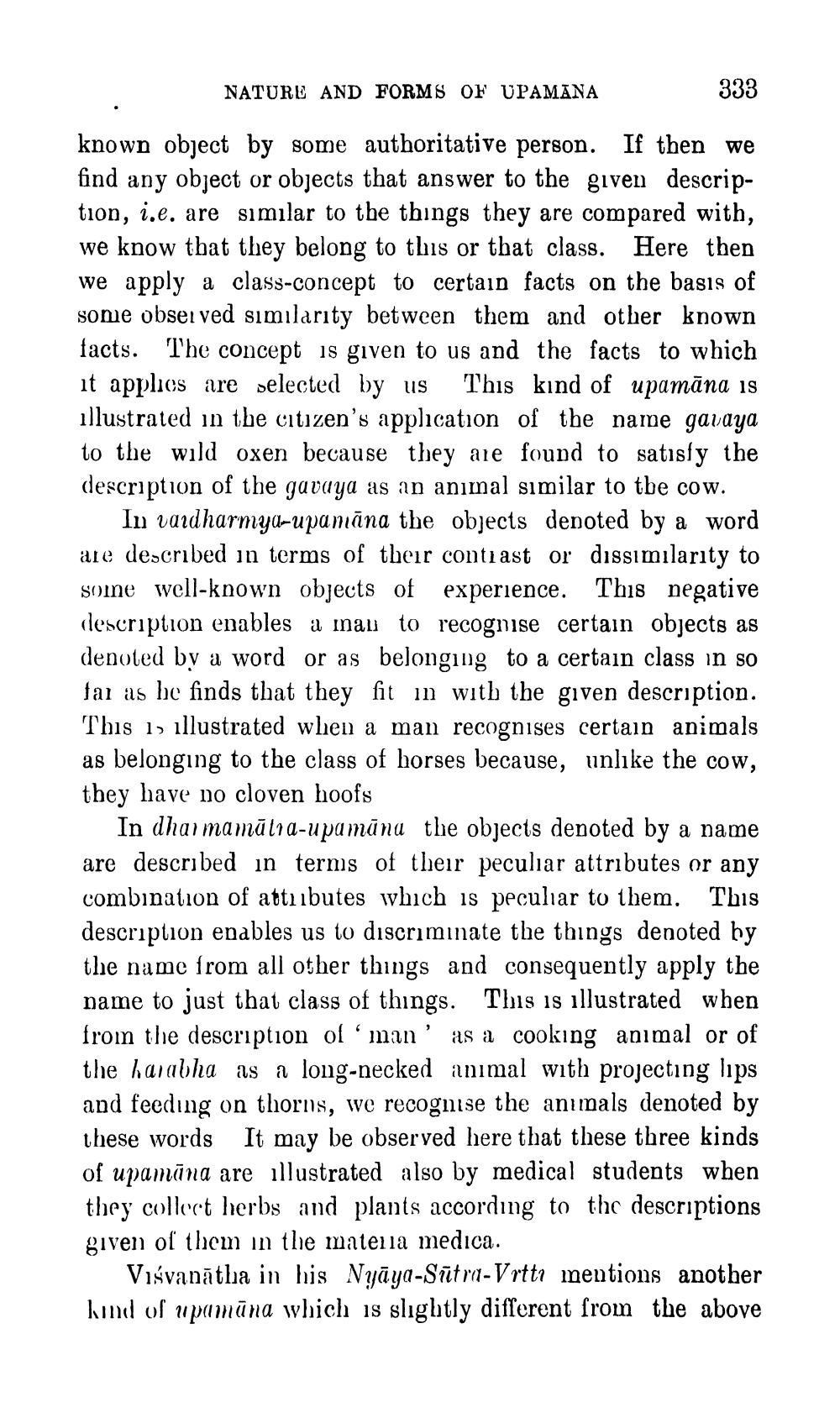________________
NATURE AND FORMS OF UPAMANA
333
known object by some authoritative person. If then we find any object or objects that answer to the given description, i.e. are similar to the things they are compared with, we know that they belong to this or that class. Here then we apply a class-concept to certain facts on the basis of some obsei ved similarity between them and other known facts. The concept is given to us and the facts to which it applies are selected by us This kind of upamāna is illustrated in the citizen's application of the name gavaya to the wild oxen because they are found to satisfy the description of the gavaya as an animal similar to tbe cow.
In vardharmya-upamāna the objects denoted by a word are described in terms of their contiast or dissimilarity to some well-known objects of experience. This negative description enables a man to recognise certain objects as denoted by a word or as belonging to a certain class in so fai as he finds that they fit in with the given description. This 1» illustrated when a man recognises certain animals as belonging to the class of horses because, unlike the cow, they have no cloven hoofs
In dhai mamātia-upamūnu the objects denoted by a name are described in terms of their peculiar attributes or any combination of attributes which is peculiar to them. This description enables us to discriminate the things denoted by the name from all other things and consequently apply the name to just that class of things. This is illustrated when from the description of 'man' as a cooking animal or of the harabha as a long-necked animal with projecting lips and feeding on thorns, we recognise the animals denoted by these words It may be observed here that these three kinds of upamāna are illustrated also by medical students when they collect herbs and plants according to the descriptions given of them in the materia medica.
Viúvanātha in his Nyāya-Sūtra-Vrtti mentions another hund of upamūna which is slightly different from the above




